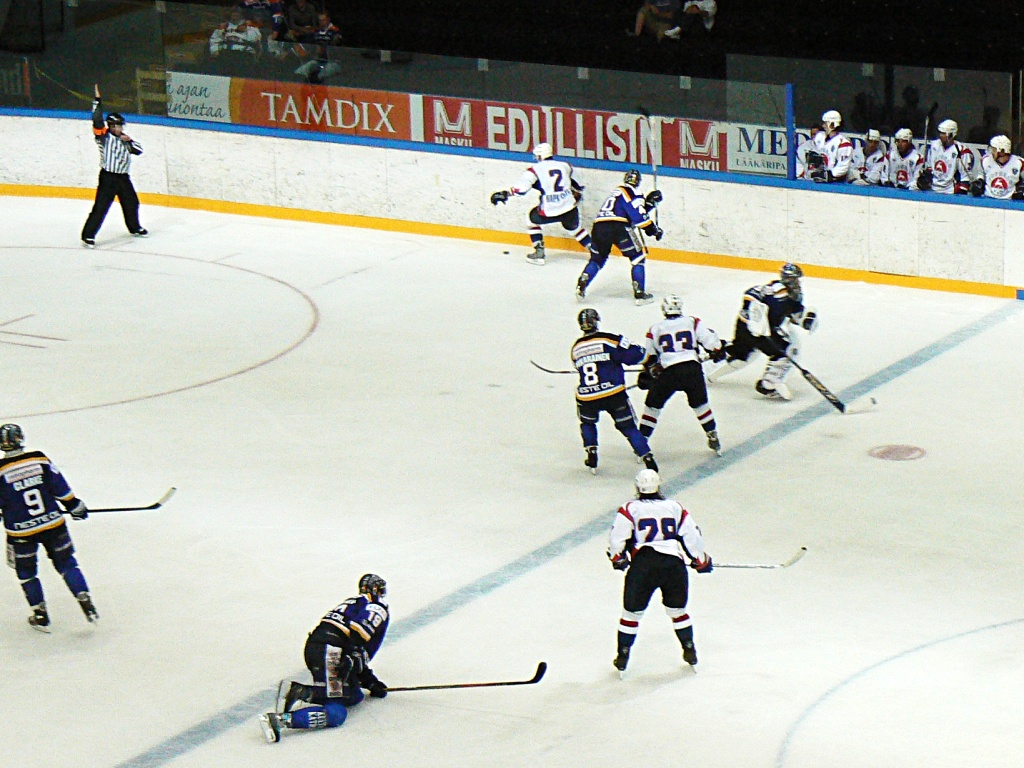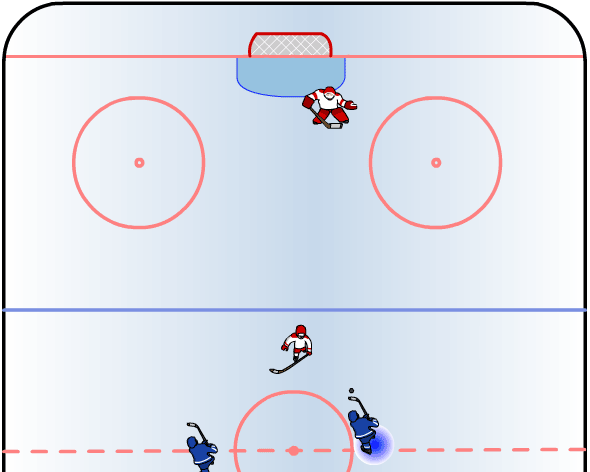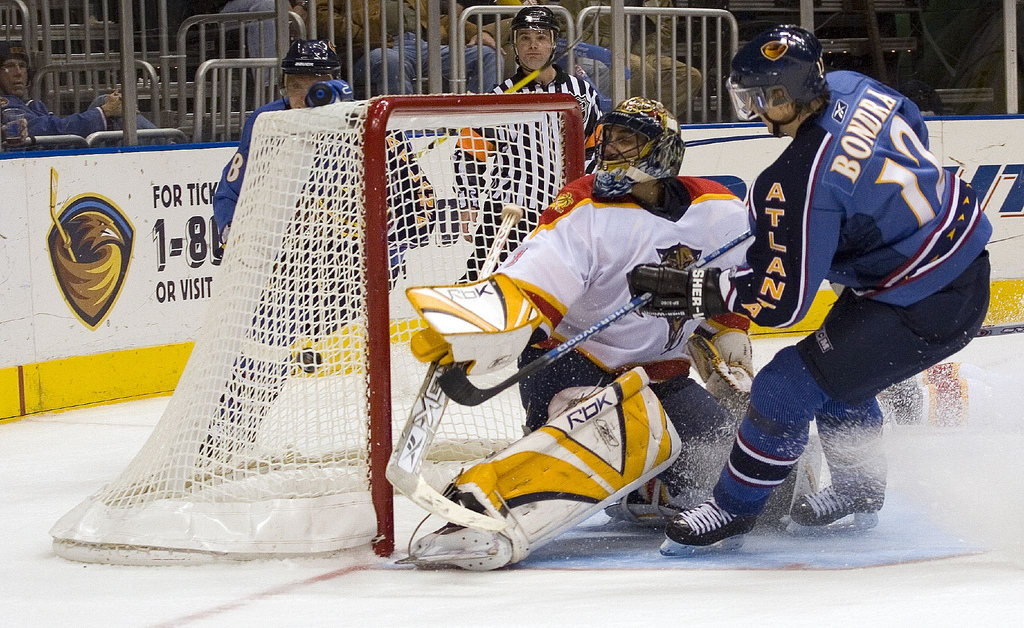|
Len Esau
Leonard Esau (born March 16, 1968) is a Canadian former ice hockey defenceman who played 27 games in the National Hockey League for the Toronto Maple Leafs, Quebec Nordiques, Calgary Flames and the Edmonton Oilers between 1991 and 1995. The Leafs drafted him in the fifth round 86th overall in the 1988 NHL Entry Draft from the St. Cloud State Huskies. Esau never scored a goal in the NHL, but notched up 10 assists and collected 24 penalty minutes. He spent much of his tenure in the American Hockey League and the International Hockey League, but also spent one season in Japan Japan ( ja, 日本, or , and formally , ''Nihonkoku'') is an island country in East Asia. It is situated in the northwest Pacific Ocean, and is bordered on the west by the Sea of Japan, while extending from the Sea of Okhotsk in the north ..., playing for Seibu-Tetsudo Tokyo. Internationally Esau played for the Canadian national team at the 1995 World Championships, winning a bronze medal. Ca ... [...More Info...] [...Related Items...] OR: [Wikipedia] [Google] [Baidu] |
Toronto Maple Leafs
The Toronto Maple Leafs (officially the Toronto Maple Leaf Hockey Club and often referred to as the Leafs) are a professional ice hockey team based in Toronto. They compete in the National Hockey League (NHL) as a member of the Atlantic Division in the Eastern Conference. The club is owned by Maple Leaf Sports & Entertainment, a company that owns several professional sports teams in the city. The Maple Leafs' broadcasting rights are split between BCE Inc. and Rogers Communications. For their first 14 seasons, the club played their home games at the Mutual Street Arena, before moving to Maple Leaf Gardens in 1931. The Maple Leafs moved to their present home, Scotiabank Arena (originally named Air Canada Centre), in February 1999. The club was founded in 1917, operating simply as Toronto and known then as the Toronto Arenas. Under new ownership, the club was renamed the Toronto St. Patricks in 1919. In 1927, the club was purchased by Conn Smythe and renamed the Maple Leafs. ... [...More Info...] [...Related Items...] OR: [Wikipedia] [Google] [Baidu] |
1995 Men's Ice Hockey World Championships
The 1995 Men's Ice Hockey World Championships was the 59th such event sanctioned by the International Ice Hockey Federation (IIHF). Teams representing 39 countries participated in several levels of competition. The competition also served as qualifications for group placements in the 1996 competition. The top Championship Group tournament took place in Sweden from 23 April to 7 May 1995, with games played in Stockholm and Gävle. In the tournament final, Finland won the gold medal by defeating Sweden 4–1 at the Globen arena in Stockholm. The Finnish goals were scored by Timo Jutila and Ville Peltonen, who scored a hat trick. The gold medal was the first in Finland's history. Sweden had written a fight song, "Den glider in", which also was intended to be the official song of the championships. After the finals, the song became very popular in Finland. The final still has an important place in Finnish hockey culture today, a common exclamation being "95: Never forget!" Because ... [...More Info...] [...Related Items...] OR: [Wikipedia] [Google] [Baidu] |
1988–89 NCAA Division I Men's Ice Hockey Season
The 1988–89 NCAA Division I men's ice hockey season began in October 1988 and concluded with the 1989 NCAA Division I Men's Ice Hockey Tournament's championship game on April 1, 1989 at the St. Paul Civic Center in Saint Paul, Minnesota. This was the 42nd season in which an NCAA ice hockey championship was held and is the 95th year overall where an NCAA school fielded a team. Regular season Season tournaments Standings 1989 NCAA Tournament Player stats Scoring leaders The following players led the league in points at the conclusion of the season. ''GP = Games played; G = Goals; A = Assists; Pts = Points; PIM = Penalty minutes'' Leading goaltenders The following goaltenders led the league in goals against average at the end of the regular season while playing at least 33% of their team's total minutes. ''GP = Games played; Min = Minutes played; W = Wins; L = Losses; OT = Overtime/shootout losses; GA = Goals against; SO = Shutouts; SV% = Save percentage; G ... [...More Info...] [...Related Items...] OR: [Wikipedia] [Google] [Baidu] |
Saskatchewan Junior Hockey League
The Saskatchewan Junior Hockey League is a Junior 'A' ice hockey league operating in the Canadian province of Saskatchewan and one of nine member leagues of the Canadian Junior Hockey League. Open to North American-born players 20 years of age or younger, the SJHL's 12 teams play in three divisions: the Olympic Buildings, Sherwood and Viterra Divisions. A major attraction in Saskatchewan, the SJHL draws 400,000 fans each season. The winner of the SJHL playoffs is crowned the provincial Junior A champion and continues on to play in the ANAVET Cup against the Manitoba provincial champion (winner of the Manitoba Junior Hockey League playoffs) for the right to represent the Western region at the Centennial Cup, the national Junior A championship. History The current version of the SJHL was preceded by a separate league with the same name that operated from 1948 to 1966. The modern SJHL was formed in July 1968 as a result of the Western Canada Hockey League (WCHL) splitting ... [...More Info...] [...Related Items...] OR: [Wikipedia] [Google] [Baidu] |
Humboldt Broncos
The Humboldt Broncos are a Canadian junior "A" ice hockey team from Humboldt, Saskatchewan. Established in 1970, the Broncos play in the Saskatchewan Junior Hockey League. History The Broncos were established in 1970 by a group of local organizers. The team was originally affiliated with the Swift Current Broncos of the Western Hockey League, who supplied the team with team name, jerseys and some players. They also had a close affiliation that year with St Peter's College in nearby Muenster. The Broncos originally played at the Leo Parker Arena and then move into the new Elgar Petersen Arena since 1980, which has a capacity of 1,800. The team also won the 2003 and 2008 Royal Bank Cup (Canadian Junior A championship). The team's mascot is a horse named SlapShot. The team colors are green, gold black and white. The Broncos are the most successful team in SJHL history, having won the league championship ten times, the Anavet Cup/Canalta Cup seven times, and the Royal Bank Cu ... [...More Info...] [...Related Items...] OR: [Wikipedia] [Google] [Baidu] |
Penalty (ice Hockey)
A penalty in ice hockey is a punishment for an infringement of the rules. Most penalties are enforced by sending the offending player to a penalty box for a set number of minutes. During the penalty the player may not participate in play. Penalties are called and enforced by the referee, or in some cases, the linesman. The offending team may not replace the player on the ice (although there are some exceptions, such as fighting), leaving them short-handed as opposed to full strength. When the opposing team is said to be on a ''power play'', they will have one more player on the ice than the short-handed team. The short-handed team is said to be "on the penalty kill" until the penalty expires and the penalized player returns to play. While standards vary somewhat between leagues, most leagues recognize several common varieties of penalties, as well as common infractions. The statistic used to track penalties is called "penalty minutes" and abbreviated to "PIM" (spoken as single w ... [...More Info...] [...Related Items...] OR: [Wikipedia] [Google] [Baidu] |
Point (ice Hockey)
In ice hockey, point has three contemporary meanings. Personal stat A point is awarded to a player for each goal scored or assist earned. The total number of goals plus assists equals total points. The Art Ross Trophy is awarded to the National Hockey League (NHL) player who leads the league in scoring points at the end of the regular season. Team stat Points are also awarded to assess standings (or rankings). Historically, teams were awarded two points for each win, one point for each tie and no points for a loss. Such a ranking system, implemented primarily to ensure a tie counted as a "half-win" for each team in the standings, is generally regarded as British and/or European in origin and as such adopted by the National Hockey League which was founded in Canada where leagues generally used ranking systems of British origin. Awarding points in the standings contrasts with traditional American ranking systems favored in sports originating within the United States where today the m ... [...More Info...] [...Related Items...] OR: [Wikipedia] [Google] [Baidu] |
Assist (ice Hockey)
In ice hockey, an assist is attributed to up to two players of the scoring team who shot, passed or deflected the puck towards the scoring teammate, or touched it in any other way which enabled the goal, meaning that they were "assisting" in the goal. There can be a maximum of two assists per goal. The assists will be awarded in the order of play, with the last player to pass the puck to the goal scorer getting the primary assist and the player who passed it to the primary assister getting the secondary assist. Players who gain an assist will get one point added to their player statistics. Despite the use of the terms "primary assist" and "secondary assist", neither is worth more than the other, and neither is worth more or less than a goal. Assists and goals are added together on a player's scoresheet to display that player's total points. Special cases If a player scores off a rebound given up by a goaltender, assists are still awarded, as long as there is no re-possession by t ... [...More Info...] [...Related Items...] OR: [Wikipedia] [Google] [Baidu] |
Goal (ice Hockey)
In ice hockey, a goal is scored when the puck entirely crosses the goal line between the two goal posts and below the goal crossbar. A goal awards one point to the team attacking the goal scored upon, regardless of which team the player who actually deflected the puck into the goal belongs to (see also own goal). Typically, a player on the team attempting to score shoots the puck with their stick towards the goal net opening, and a player on the opposing team called a goaltender tries to block the shot to prevent a goal from being scored against their team. The term goal may also refer to the structure in which goals are scored. The ice hockey goal is rectangular in shape; the front frame of the goal is made of steel tube painted red (blue in the ECHL because of a sponsorship deal with GEICO) and consists of two vertical goalposts and a horizontal crossbar. A net is attached to the back of the frame to catch pucks that enter the goal and also to prevent pucks from entering it ... [...More Info...] [...Related Items...] OR: [Wikipedia] [Google] [Baidu] |




